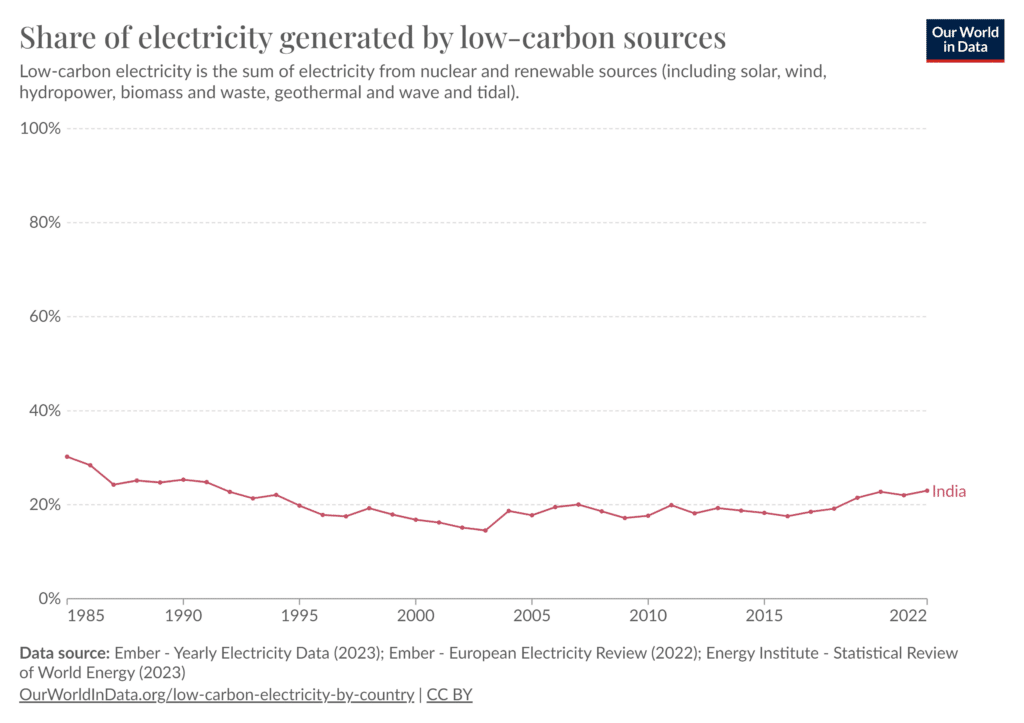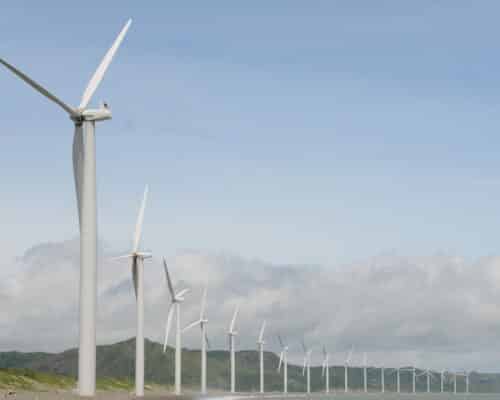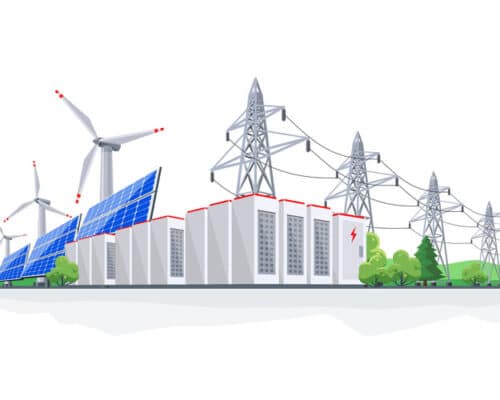Top Wind Energy Companies in India 2024
Source: The New Economy
31 January 2024 – by Eric Koons Comments (0)
Wind energy companies in India are playing a crucial role in reshaping the country’s energy landscape, driving significant strides towards sustainable and renewable energy solutions. With a growing emphasis on reducing carbon emissions and harnessing renewable resources, India’s energy sector is witnessing a rapid shift from traditional fossil fuels to more sustainable options like wind power.
While wind energy in India still plays a relatively small part in India’s overall electricity generation (3.77%), it has the world’s fourth-highest installed wind power capacity. This is driving growth for renewables as a whole. Renewables account for 23% of the country’s power generation and 10.4% of its energy consumption. India’s renewable electricity capacity is growing at the fastest rate of any major economy.

Furthermore, India is aiming to significantly scale up its wind energy capacity over the next decade. The country aims to develop 22 GW of wind energy capacity over the next five years and have an installed capacity of 140 GW by 2030. This will require tripling the country’s almost 43.8 GW of wind capacity.
These goals, along with the country’s vast wind energy potential, sets the stage for significant growth in the wind energy industry, driving both economic and sustainable development.
Who Is the Largest Producer of Wind Energy in India?
The largest wind energy-producing company in India is Suzlon Energy Limited. The company has an installed capacity of over 14 GW from over 111 wind energy farms. Its operation spans nine states, including the two with the highest potential capacity: Rajasthan and Gujarat. Outside of India, the company has an additional 6 GW of installed capacity in 17 countries.
On a country level, the Indian states with the highest developed capacity are Tamil Nadu at 9.9 GW and Gujarat at 7.9 GW.

Both states primarily rely on onshore wind farms, yet they have untapped offshore potential. Meanwhile, the states of Gujarat and Tamil Nadu alone have a combined offshore wind potential of 70 GW, and the Indian government is working to facilitate development to capitalise on the wind potential of its coast. In December 2023, the government released the first tenders to develop major offshore wind power projects in India. This is a larger strategy to develop 37 GW of offshore wind by 2030.
Which Company Has India’s Largest Wind Turbine?
Adani Wind’s 5.2 MW wind turbine received certification in mid-2023. This is the largest wind turbine in India and will be produced for the domestic and international markets.
However, this is still a fraction of the size compared to the world’s largest wind turbine, which has a capacity of 16 MW. In general, the bigger the wind turbines, the more efficient they are. Wind speeds typically increase with altitude, and larger-diameter rotors are more efficient.

Largest Wind Farm in India
India’s largest and the world’s third-largest wind farm is the Jaisalmer Wind Park in the state of Rajasthan. It has a capacity of 1.6 GW and consists of several smaller wind farms with turbines ranging from 350 kW to 2.1 MW generation in capacity. The project was finished in 2010 and is owned by India’s largest wind energy producer, Suzlon.
Top Wind Energy Companies in India 2024
The recent push to increase renewable energy capacity and incentives for wind energy companies in India in 2024 is driving significant growth in the Indian wind energy market. The industry is expected to grow at a compound annual growth rate (CAGR) of more than 8% over the next decade.
Suzlon Energy Limited
As previously discussed, Suzlon is currently the country’s wind energy leader. It has a market cap of over USD 6.88 billion and the largest installed capacity in the country. The company forecasts a global wind energy capacity of 100 GW by 2030.
Vestas Wind Systems AS
Vestas is a global wind energy company based in Denmark. It is a full-service company that produces, installs and maintains wind turbines. It has shipped turbines globally that account for 157 GW of capacity, with significant deployment in India. Vestas is a global leader in wind energy and a leader in India.
Tata Power Company
Tata Power is a leading energy producer in India with a mix of fossil fuels and renewable energy. It has an installed wind energy capacity of 982 MW, coming from nine wind farms spread across seven Indian states.
However, the company plans to develop another 10 GW of solar and wind power by 2030 to generate 70% of its energy from renewable sources by 2030. Furthermore, the company has a core mission of being net-zero by 2040 – 30 years before the Indian government’s goal.
Adani Green Energy Limited
Adani is an Indian business conglomerate that has businesses across several sectors. Its wind energy branch builds and owns utility-scale wind farms with a current capacity of over 1.2 GW. Its larger renewable energy projects exceed 8 GW of capacity, with the company setting a goal of 45 GW of renewable energy capacity by 2030. This will require at least 3 GW of renewable energy capacity growth annually.
Overall, the renewable energy side of the business has a market cap of over USD 29 billion.
Wind Power: Critical To India’s Near-term Renewable Energy Goals
Looking ahead, these companies will play a critical role in India’s goals for renewable energy, including tripling its installed renewable energy capacity to 500 GW by 2030. This will account for 50% of the country’s energy needs. The government expects 122 GW, nearly one-third of this from wind energy projects.
The commitment of wind energy companies and supportive government policies will be critical to meeting these goals. The journey towards a net-zero future will require concerted efforts from both the public and private sectors as they collaborate to overcome challenges and harness the full potential of wind power in India.
by Eric Koons
Eric is a passionate environmental advocate that believes renewable energy is a key piece in meeting the world’s growing energy demands. He received an environmental science degree from the University of California and has worked to promote environmentally and socially sustainable practices since. Eric’s expertise extends across the environmental field, yet he maintains a strong focus on renewable energy. His work has been featured by leading environmental organizations, such as World Resources Institute and Hitachi ABB Power Grids.
Read more




